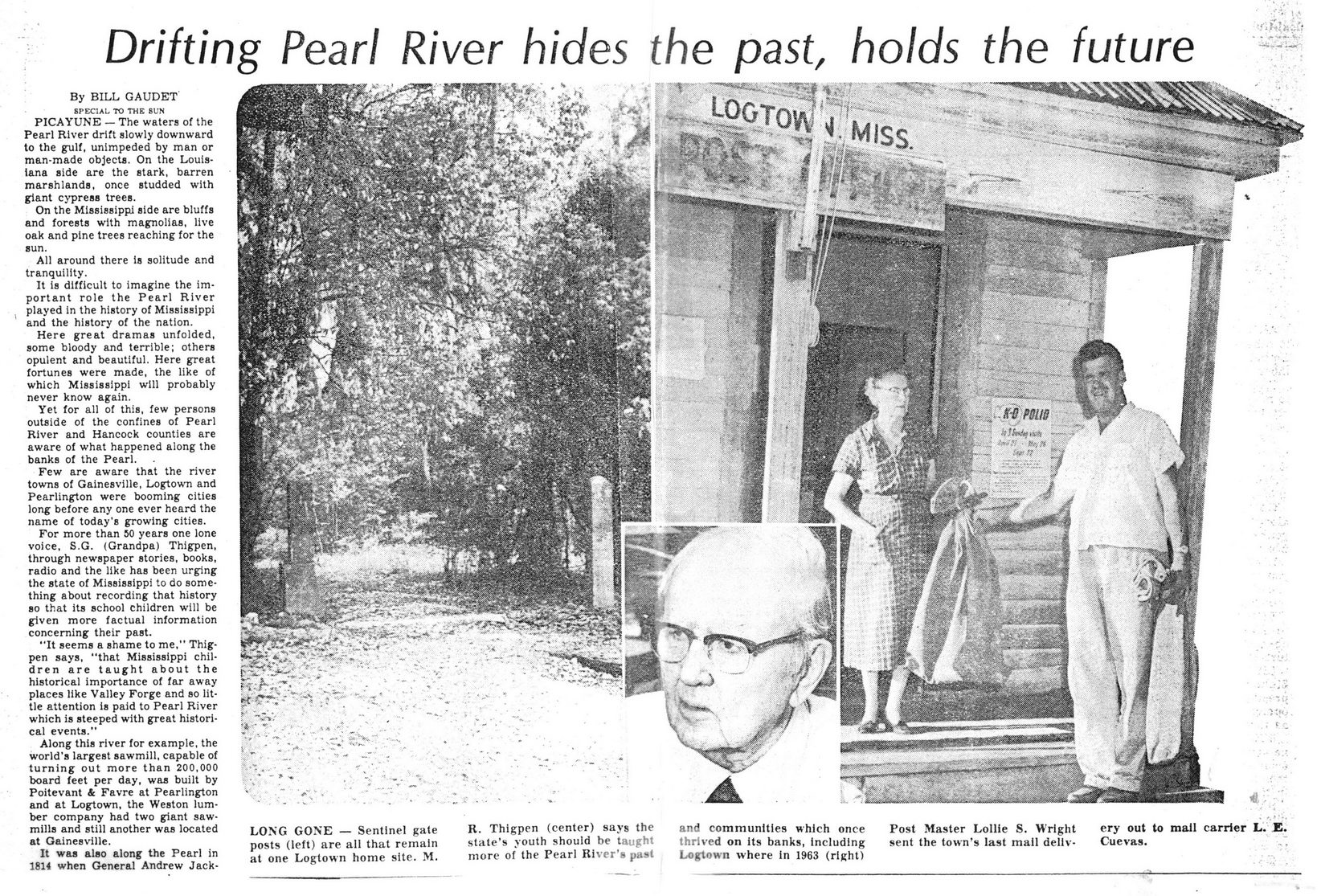This text was obtained via automated optical character recognition.
It has not been edited and may therefore contain several errors.
Drifting Pearl River hides the past, holds the future By BILL GAUDET SPECIAL TO THE BUN PICAYUNE — The waters of the Pearl River drift slowly downward to the gulf, unimpeded by man or man-made objects. On the Louisiana side are the stark, barren marshlands, once studded with giant cypress trees. On the Mississippi side are bluffs and forests with magnolias, live oak and pine trees reaching for the sun. All around there is solitude and tranquility. It is difficult to imagine the important role the Pearl River played in the history of Mississippi and the history of the nation. Here great dramas unfolded, some bloody and terrible; others opulent and beautiful. Here great fortunes were made, the like of which Mississippi will probably never know again. Yet for all of this, few persons outside of the confines of Pearl River and Hancock counties are aware of what happened along the banks of the Pearl. Few are aware that the river towns of Gainesville, Logtow*n and Pearlington were booming cities long before any one ever heard the name of today’s growing cities. For more than 50 years one lone voice, S.G. (Grandpa) Thigpen, through newspaper stories, books, radio and the like has been urging the state of Mississippi to do something about recording that history so that its school children will be given more factual information concerning their past. “It seems a shame to me," Thigpen says, "that Mississippi children are taught about the historical importance of far away places like Valley Forge and so little attention is paid to Pearl River which is steeped with great historical events.” Along this river for example, the world's largest sawmill, capable of turning out more than 200,000 board feet per day, was built by Poitevant & Favre at Pearlington and at Logtown, the Weston lumber company had two giant sawmills and still another was located at Gainesville. It was also along the Pearl in 1814 when General Andrew Jack- LONG GONE — Sentinel gate posts (left) are all that remain at one Logtown home site. M. R. Thigpen (center) says the state’s youth should be ti-1- "hi more of the Pearl River's pasi and communities which once Post Master Lollie S. Wright ery out to mall carrier L. E. thrived on its banks, including sent the town’s last mall deliv- Cuevas. Logtown where in 1963 (right)

Logtown Drifting Pearl River